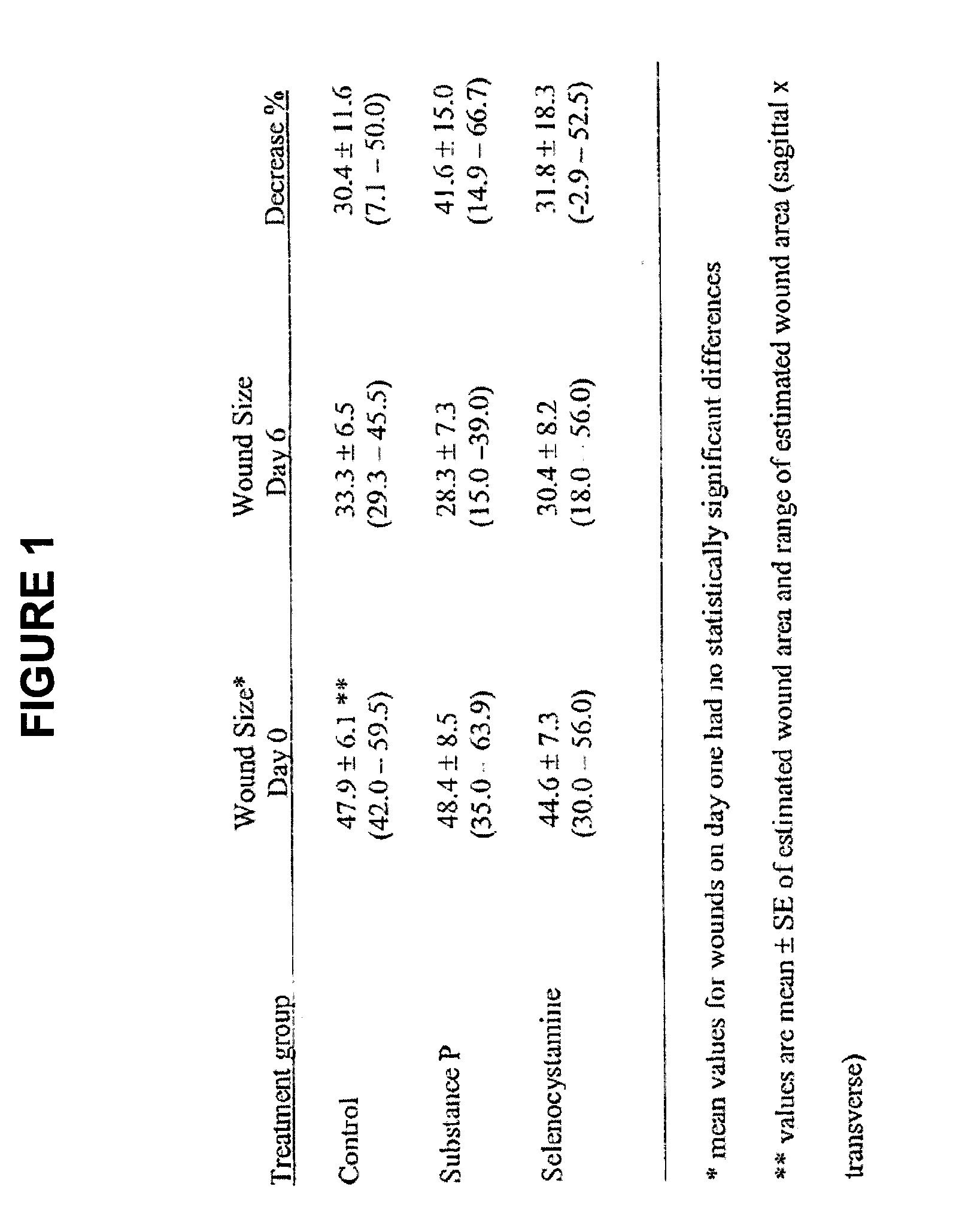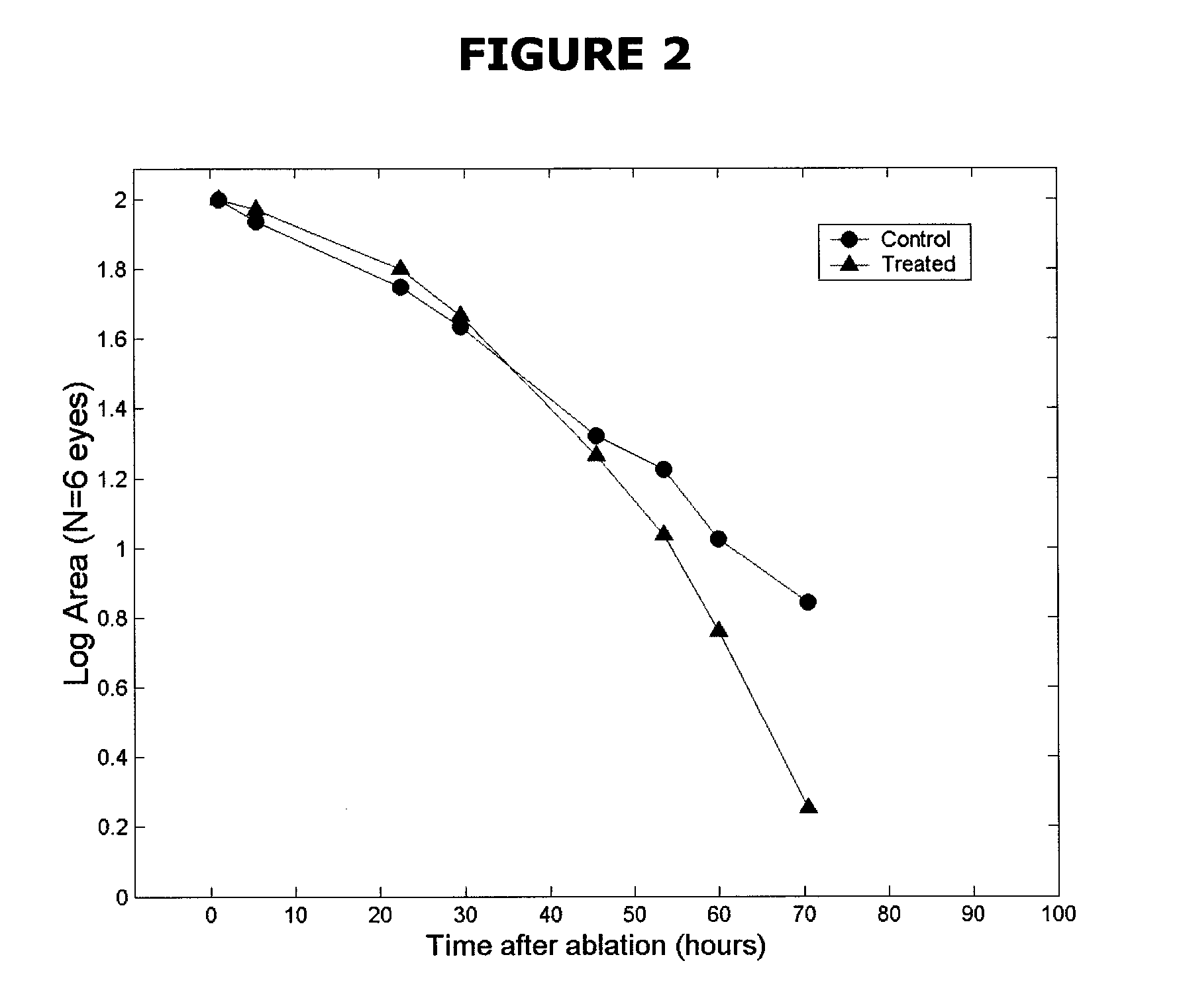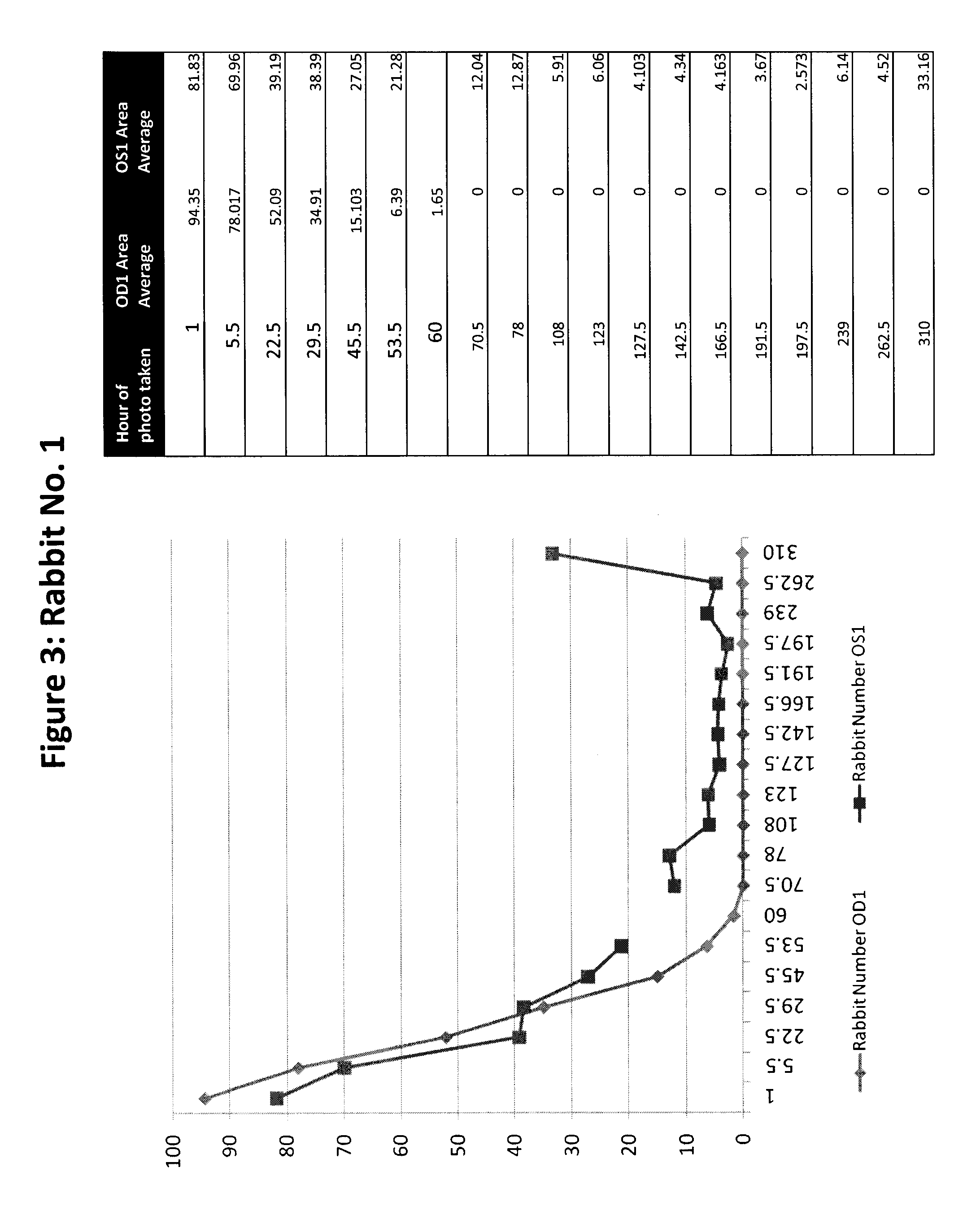Methods and compositions using substance p to promote wound healing
a technology of substance p and composition, applied in the direction of peptide/protein ingredients, peptide sources, applications, etc., can solve the problems of trauma, surgical procedures, disease, etc., and achieve the effects of promoting healing, promoting cellular growth, and enhancing growth promotion activity
- Summary
- Abstract
- Description
- Claims
- Application Information
AI Technical Summary
Benefits of technology
Problems solved by technology
Method used
Image
Examples
experimental examples
Example 1
Use of Substance P to Treat a Vascular Wound
[0079]Substance P exhibits properties which may be capable of stimulating wound healing. Based on this, the purpose of the following example was to evaluate the effect of topically applied substance P on wound healing in full thickness skin punch wounds in a rat model. In addition, selenocystamine was tested as a potential wound treatment at the same time.
Animal Model and General Care
[0080]Twenty-one male Sprague-Dawley rats weighing between 300-350 g were used in this study. The rats were housed in the temperature controlled vivarium at Texas Tech Health Science Center with a 12-hour alternating light cycle, and were provided water and rat chow ad libitum. Animals were allowed several days of adjustment upon arrival before the surgery to get rehydrated and familiar with the environment. The study protocol was approved by the Texas Tech University Health Sciences Center Animal Care and Use Committee which assured that the animals ...
example 2
Effect of SP±IGF-1 in Epithelial Healing after Photorefractive Keratectomy in Rabbits
[0092]Corneal wound healing after Photorefractive keratectomy and its consequences, epithelial defect and haze, have been studied extensively. Results on how the absence of corneal epithelium affects the stromal keratocytes are contradictory. Some studies showed that an early decrease in the density of keratocytes is followed by an increased number of these cells in the underlying stroma and polymorphonuclear (PMN) inflammatory reaction (Hirst et al., 1981; Kenyon et al., 1979). This stromal change is related to stromal haze and instability of the refractive result. Other studies show that a traumatic removal of the epithelium would prevent changes in the stromal healing (Harmann et al., 1962; Nakayasu et al., 1988).
[0093]Studies suggest that the epithelium influences the cellular activation and metabolic activities of stromal cells during wound healing (Dohlman, 1971; Johnson-Muller et al., 1978). ...
example 3
Substance P Analogs
[0118]As mentioned previously, Substance P(SP) is a ubiquitous mammalian neuropeptide having the structure RPKPQQFFGLM (SEQ ID NO:1). In order to determine which portion of SP is responsible for its binding to the NK1 receptor, physiological assays have been performed using SP analogs that were systematically shortened, and it was found that the six amino acids at the carboxy terminal end of the molecule were required for most of SP's binding to its receptor: SP6-11 (SEQ ID NO:8) showed activity of about 50-90% of that which was found for the whole SP molecule. Of the six C-terminal residues, the importance of the phenylalanine residues at positions 7 and 8 for the SP−NK1 receptor interaction was demonstrated by the finding that the substitution of another amino acid for either of these residues results in a dramatic change in reactivity. For example, replacement of either Phe7 or Phe8 by a D-phenylalanine residue results in a 20-fold decrease in the binding of th...
PUM
| Property | Measurement | Unit |
|---|---|---|
| size | aaaaa | aaaaa |
| molecular weight | aaaaa | aaaaa |
| depth | aaaaa | aaaaa |
Abstract
Description
Claims
Application Information
 Login to View More
Login to View More - R&D
- Intellectual Property
- Life Sciences
- Materials
- Tech Scout
- Unparalleled Data Quality
- Higher Quality Content
- 60% Fewer Hallucinations
Browse by: Latest US Patents, China's latest patents, Technical Efficacy Thesaurus, Application Domain, Technology Topic, Popular Technical Reports.
© 2025 PatSnap. All rights reserved.Legal|Privacy policy|Modern Slavery Act Transparency Statement|Sitemap|About US| Contact US: help@patsnap.com



